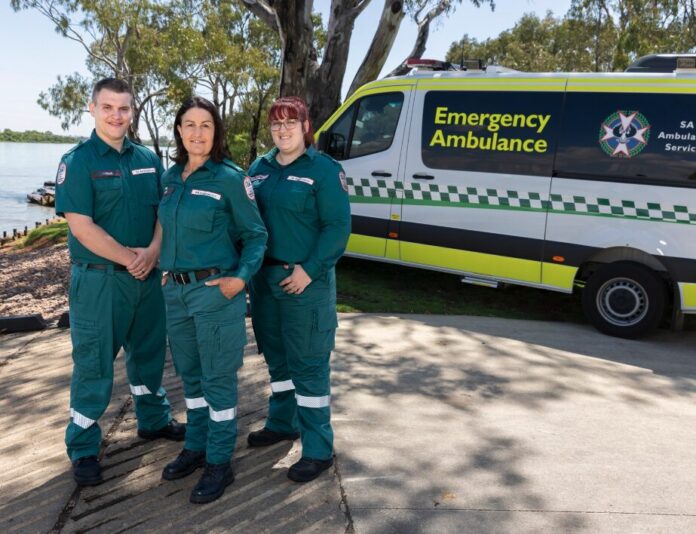New SA Ambulance response times data released today shows the highest percentage of South Australians receiving an ambulance on-time for a lights and sirens emergency since November 2020.
In January, 68.7% of all Priority 2 cases were attended to within the target time of 16 minutes – the highest percentage of ambulances arriving on time to Priority 2 emergencies in any month since November 2020 (68.8%).
There has also been a substantial improvement in response times for Priority 1 cases, with 75.2% attended to within the target time of eight minutes, compared to just 47.1% in January 2022.
In total, 7,410 lights and sirens emergencies (either Priority 1 or Priority 2) arrived on time last month – compared to just 4,115 in the same month three years ago – an 80% improvement.
This represents an extra 3,295 South Australians who had an ambulance arrive on time in an emergency, said SA Premier, Peter Malinauskas.
“We promised to reduce ambulance response times and we have delivered,” said the Premier.
“We are building a bigger health system to ensure South Australians get the health care they need, when they need it. We are starting to see the results of the Government’s investment with the best Priority 2 response times in more than four years.
When we came to Government, an ambulance arrived on time for only one out of three South Australians who had a lights and sirens emergency.”
The Premier said the promising new statistics were the direct result of the State Government hiring more ambulance officers, getting more ambulances on the road and building more ambulance stations to increase emergency coverage.
This includes the new $120 million ambulance headquarters and co-located Adelaide ambulance station at Mile End South.
Construction is moving ahead at the site, with recent milestones including completion of the upper slab and external cladding on the ambulance headquarters building, gyprock sheeting of the communications and ICT room, and the first coat of paint on some of the internal walls.
The purpose-designed headquarters will house the 143 personnel responsible for responding to ambulance Triple Zero activity – with room to grow staff and infrastructure in the future. There will also be dedicated rooms for training and handling major incidents including natural disasters, large-scale accidents, and outbreaks.
Alongside the HQ will be the new Adelaide ambulance station. It will be home to the additional 16 paramedics that started in July last year, 16 paramedics who will start this July, as well as the 24-paramedic Ashford crews.
The station will accommodate seven ambulances and two light fleet vehicles, providing additional coverage and stopping surrounding crews being pulled away from their local areas. The site is on track to open by the end of 2025.
Ambulance response time data is published every month on the SA Health website.
Now, it’s more than two in three.
We know the job isn’t done, and will continue to back our ambos so they can provide quality health care to South Australians.
As put by Chris Picton
The dramatic improvement in January’s response times compared to the same month three years ago shows that our investment in the state’s ambulance service is reaping rewards.
We committed to recruiting an additional 350 ambos in our first term of government, with 273 of those having hit the road already and the remainder to be deployed by the end of this year.
We’ve also committed to getting 36 additional ambulances on the road and are building or upgrading 22 ambulance stations across the state.
This increases our ambulance coverage and means ambos can get to South Australians quicker in an emergency.
As put by SAAS Chief Executive Officer, Rob Elliott
I am incredibly proud of our staff across the organisation for their hard work and dedication in achieving these improved emergency response times.
The single biggest factor has been the increased presence of more resources on the ground, driven by our recruitment targets being met.
We’ve also made significant strides in improving other contributors to our Priority 2 performance, focusing on how we respond to emergency situations.
We have increased the role of single responders, improved ambulance availability, and still maintained excellent clinical care for South Australians.



